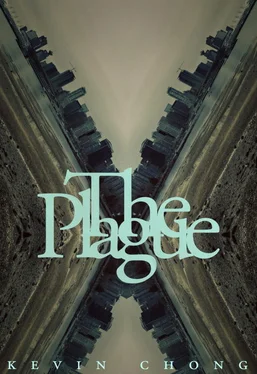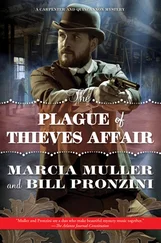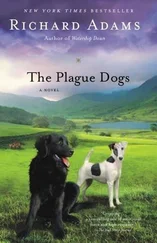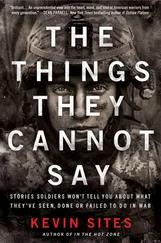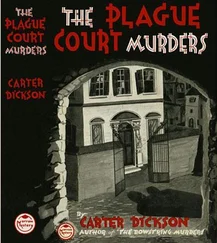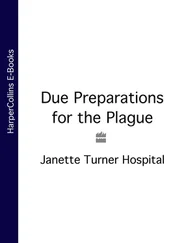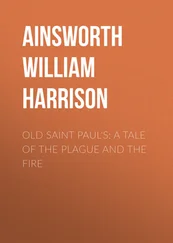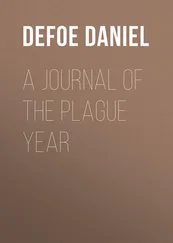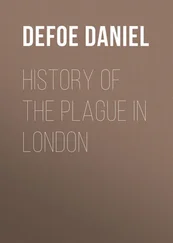Siddhu waited for Rieux to get his coffee. “Seems like there’s a lot of freedom in your new position,” the doctor told him. He seemed to pick his words carefully. “It must be exciting.”
“It was an impulse decision,” Siddhu said, as they both stepped outside. “How has business been in your clinic?”
“Surprisingly, nothing much has changed.”
Before they parted ways, Siddhu mentioned his next stop. “It’s going to get ugly,” Rieux warned him. He shook his head. “Everyone wants to make this health issue political. Infectious disease doesn’t check your party affiliation. Suffering is universal.”
It had been a cold, damp fall, but the first week of the quarantine offered glimpses of sunlight. Siddhu passed into Gastown and the business district and could see crowds forming on the other side of a police roadblock. As those with any familiarity with Vancouver’s outbreak might remember, the first week of the quarantine concluded with its only large-scale public conflict. For most locals, it felt inevitable, predictable, and tiresome. People were relieved that the rioting was limited and that there was only one during this period of protracted misery. Siddhu himself wouldn’t have predicted a riot that day, but he wouldn’t have ruled it out. He attended the protest knowing that the turnout would be high—that in itself was newsworthy. Tensions had risen and anxieties had culminated in a march by the city’s racist organizations (both its suits and its boots) and a concurrent counter-demonstration.
Several years prior to the epidemic, the city experienced a violent riot when the professional ice hockey team lost a championship final game. Drunken hockey fans, more inflamed by the catharsis of frenzy than any disappointment, trashed downtown businesses and set fire to a police car. On the morning after, Siddhu spent several hours with the newspaper’s archivist going through clippings. He interviewed some local historians and academics. They all concluded that the city’s first riots had been caused by racial resentments and economic anxiety. The 1907 Anti-Oriental Riots stemmed from an influx of Chinese railway workers undercutting the bargaining power of white labour. Two riots in the Depression era originated, respectively, from a fight for longshoreman’s rights and disgruntled unemployed men cut off from government relief.
In the last half-century, the motivations for and conditions that precipitated rioting, said the experts, became less overtly political. The Gastown riots in 1971 arose from a heavy-handed police response to a marijuana-rights protest. People rioted outside a Rolling Stones concert in 1972. The first hockey riot in 1994 seemed to result from genuine sports-induced nihilism. (Vancouver Police blamed the mass disruption and property damage on a short-lived alternative publication. In that free weekly, a columnist offered the cheeky suggestion of looting as a means to alleviating class envy.) These latter-day riots dramatized the struggle between personal freedom—to smoke, to rock out, to throw a tantrum—and state power. Some argued that they illustrated generational divides rather than friction between economic stratas. These were the types of riots reserved for a sleepy provincial city in an economically developed country.
At its outset, the riot that Vancouver experienced during the period of this narrative had the markers of the city’s earlier scenarios in that there was an existential crisis that flushed out base resentments. As Siddhu progressed through the crowds, he had trouble finding the original European-Canadian rights group. The sign-bearing anti-racist crowd was far more prominent and formed a throng around the fencing and line of police security along Robson Street leading to the south side of the old Art Gallery.
Food carts were stationed at the outskirts of the demonstration, lending a festive atmosphere to this political event. A majority of the crowd consisted of people who might otherwise describe themselves as bystanders. Siddhu assumed—hoped—they might be anti-racist. Their ethnic make-up was varied, although their identities were largely concealed. Face masks were effective in obscuring identities. Protestors covered their heads in toques and hooded sweatshirts, and as it was also unseasonably sunny, many wore mirrored sunglasses. A number wore backpacks, although Siddhu could not discern whether there were more backpacks than usual.
The active demonstrators began to jeer as the small parade came from an indeterminate point west toward the Art Gallery. He recognized the old Red Ensign flag, the one with the Union Jack in the top-left corner, slung over the shoulders of two young men in black bomber jackets and bleached blond hair who marched beside some older men holding up a banner with the name and URL of their European-Canadian rights group.
He heard the explosion first and then a burst of flame in front of the marchers. It was like thunder and lightning. Later he would realize that the sound had come from a Molotov cocktail that had been launched at the rear of the parade. This sound was, in his memory, like a starter’s pistol at a sprint. The chanting stopped behind the metal gates. The young marchers in black formed a defensive circle around the men carrying the banner. The fences gave way and the police line cracked. Siddhu stood behind a VPD officer who shouted at him to move back. The officer distracted him. Siddhu couldn’t see who threw the first punch, but soon limbs had been extended and were in motion.
The police buffered the two groups, minimizing the violence between them. The crowd of non-protestors seemed to disperse during this confrontation. Siddhu realized that it had merely moved down Robson Street, away from the police detail, and toward the shops. Siddhu was too far away to hear the glass smashing. Cellphone photos posted that day showed people in face masks stuffing their backpacks with electronics and handbags, others carrying stolen clothes by the rackful. For this segment of the crowd, the demonstration was a pretext to steal, a distraction from the spectre of death. Siddhu asserted his size and jostled himself out of the crowd as the air began to smell like gasoline and burning plastic. He succeeded in turning away from Robson Street, heading back toward Gastown, where he would find a place to write his story. He would piece it together from his own observations and the firsthand reports that he skimmed from social media.
Longtime Vancouverites felt as though they were following a script as the images and self-congratulating police press conferences ensued. But there were significant divergences from the previously established template. Many have noted that, unlike the previous riot, Vancouverites could not blame this embarrassing event on the “Bridge and Tunnel” elements. They owned this: the racists, the counter-protestors, the onlookers. More importantly, in previous iterations, the riot served to cap off tensions or, at the very least, acted as a release valve. From violence rippled sobriety, introspection, and remorse. Even as they watched homemade firebombs going off—relieved, this time, that no police cars were burned to charred hulls, and that the extent of the rioting was limited to two square blocks—they knew that this did not signal the final throes of turmoil. The rancor in our city had not been discharged; it festered. It made the people of this city sicker.
_________
The day after the riot, Romeo Parsons gave his first televised speech since his election. It was broadcast on television and radio and streamed live. Vancouverites watched it with the single-mindedness of previous generations who’d been limited to only print and broadcast media. They saw Parsons’ response as the definitive, official reaction to recent events. On a provincial and federal level, politicians had already expressed concern; some called for a redoubling of medical resources and additional relief funds. But Vancouverites regarded their comments with indifference. They felt second-hand, patronizing. Parsons, whatever his political powers might be, was trapped with the rest of the citizenry. They regarded him as their leader and he still radiated the optimistic feeling that had given him a landslide victory.
Читать дальше
